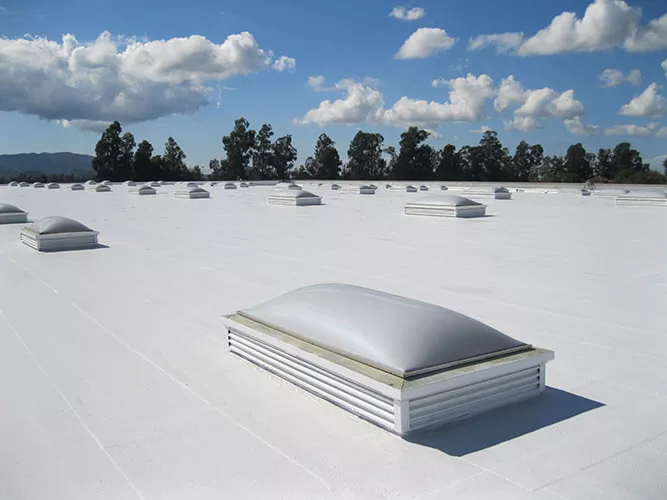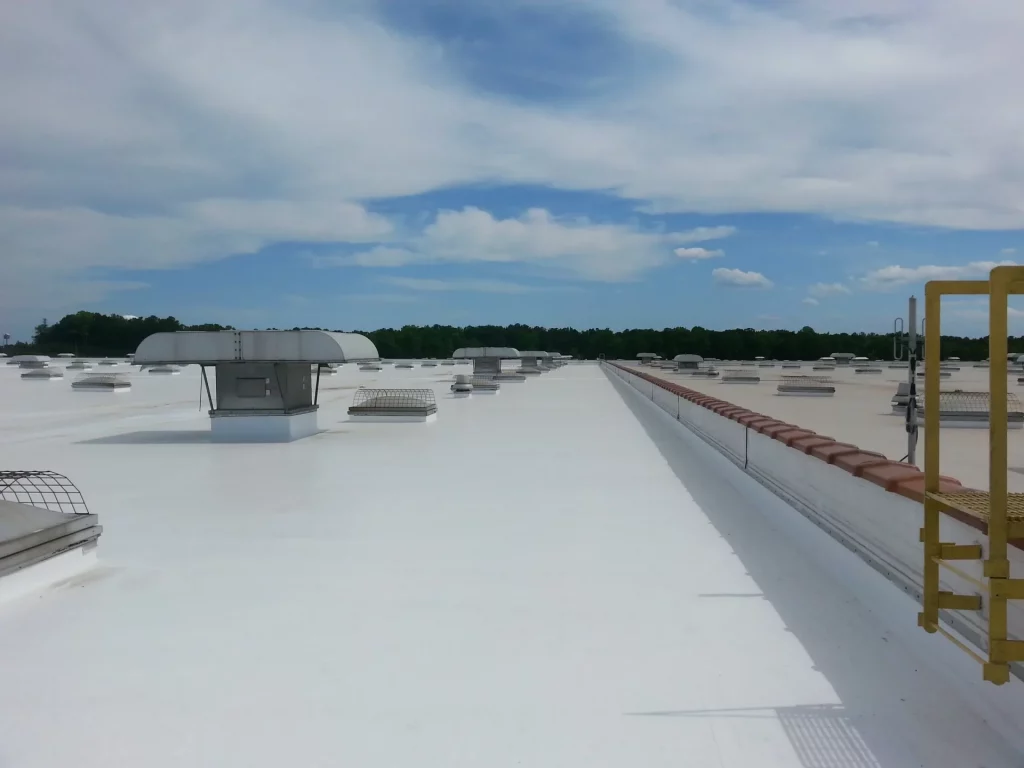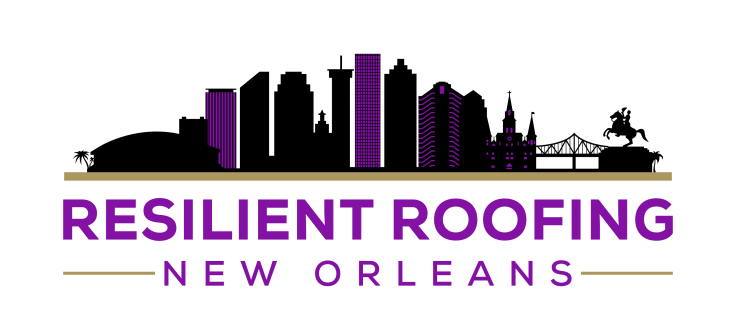For the Highest Quality Roofing at the Most Competitive Prices, Contact Us Today. Any questions? Call and ask!
For the Highest Quality Roofing at the Most Competitive Prices, Contact Us Today. Any questions? Call and ask!
TPO Roofing is a single-ply roofing membrane made from Thermoplastic Olefin. It has been in use since the early 1990s and has become an increasingly popular choice for commercial flat roofing over the last several years.Because TPO Roofing is a synthetic product, it has an extremely long useful life when installed correctly. It is not at all unusual to see TPO roofs last 15-20 years or more.
This long-term durability is one of the clear advantages of this product over its main competitor, built-up roofing. Most small business owners are familiar with the latter, which has been around since the early 1900s. However, built-up roofing made from coal tar impregnated paper is very heavy, requires more frequent repairs than TPO Roofing, and is costlier to install. For example, a new TPO roof will cost roughly $8 to $10 per square foot to install, while built-up roofing can cost up to $13 per square foot.
The second advantage of Thermoplastic Olefin is its weight. The material weighs roughly less than half a pound per square foot and has a total thickness of 60mm. This is significantly lighter than most commercial flat roofs (built-up roofs are even heavier), which means that commercial flat roofing contractors can potentially reduce their labor costs while also reducing the risk of injury to themselves and other workers.
The main concern for installation is properly adhering the membrane to the substrate (i.e., making sure it sticks). When installed over an inadequate substrate, TPO Roofing New Orleans does not perform well, which can easily damage in bad weather.
Despite these factors, many users find TPO Roofing an excellent material for flat roofing because it does not need frequent maintenance and is easy to install. These qualities make it an attractive option for commercial flat-roof applications like warehouses, manufacturing plants, and retail stores. As a result, many businesses have switched to TPO Roofing in recent years, which has helped it become the leading commercial roofing material on the market today.
Get a Free Quote
TPO Roofing is made of durable, synthetic materials that do not require frequent repair. There are very few things that can cause damage to this roofing material, so if it is installed correctly, there are no tools needed for maintenance over its long-term life.
TPO Roofing New Orleans is lighter than most commercial flat roofs on the market today. This means that relatively fewer people are needed to install this material, which lowers operating costs for companies.
The membrane also has a lower tendency to tear while being installed, resulting in more accurate execution and better results.
In many ways, TPO Roofing brings the benefits of a single-ply roof to the commercial market. It is made from synthetic materials and has been in use since the early 1990s. It is not uncommon for some companies to have roofs that have lasted 20 or 30 years or more under normal operating conditions.
TPO roofing has several advantages over other materials, especially bituminous or built-up products (because it doesn’t require any coal tar). In addition, it does not include any asbestos, which is a common worry about previous roofing materials. This means no hazardous emissions and no contact with carcinogenic substances during installation and maintenance. There’s also very little risk of damage because the material itself isn’t particularly dangerous; however, it must be properly stuck for optimum performance.

TPO, as compared to EPDM roofing New Orleans, is a relatively new roofing material, and not all roofers have been trained to install it. You’ll need to have it installed by someone who’s experienced in it, which is not every roofing company.
Another disadvantage of being a new product is that each manufacturer attempts to boost its TPO performance, resulting in a wide assortment of TPO membrane types. There are no rating systems for TPO roofing materials, so you must be certain that the maker has done their testing or worked with TPO roofing company who have installed numerous TPO roofs and knows which type of TPO will perform best in your region.
TPO is more susceptible to punctures than most other flat roofing materials, requiring increased maintenance and care. Ensure that no nails and sharp objects protruding from the surface during installation to avoid potential damage to the roof.
TPO membrane comes with short-width rolls that are 8 to 10 feet wide. This means when installing, you will have more seams. This increases labor costs during installation because more time is required to install the membrane. However, this increased labor cost may offset any increased material cost from other types of roofs.
TPO roofing offers a cost-effective way to increase your business’ energy efficiency. Business owners can expect their TPO roof to recover its initial investment within three years. After that, the reduced power costs will allow for immediate savings, making it a profitable solution from day one.
A high-quality TPO membrane can last up to 20 years before needing any repairs or maintenance work done on it. So even if you need a repair after ten years, you will still have an extremely durable and functional roof system in place for many more seasons to come without having to make another investment in your commercial flat roofing needs for at least another decade. In comparison, other conventional roofs require yearly inspections and may need repairs every 5-10 years, resulting in a much higher total over the roof’s lifetime.

In conclusion, TPO roofing has many advantages over many other types of flat roofing materials. Its versatile nature means it can be applied to various applications, while its resistance to water damage makes it a top choice for coastal areas. However, you must consider some disadvantages before deciding if TPO is right for your project, including potential punctures, tear-resistance that may be lower than other roofing materials, and the need to use more seams.
TPO roofing New Orleans is the perfect solution for any business owner looking for a functional and aesthetically pleasing flat roofing material. We offer quality roofing services for commercial establishments. Contact us today and get a free quote.
Get a Free Quote
